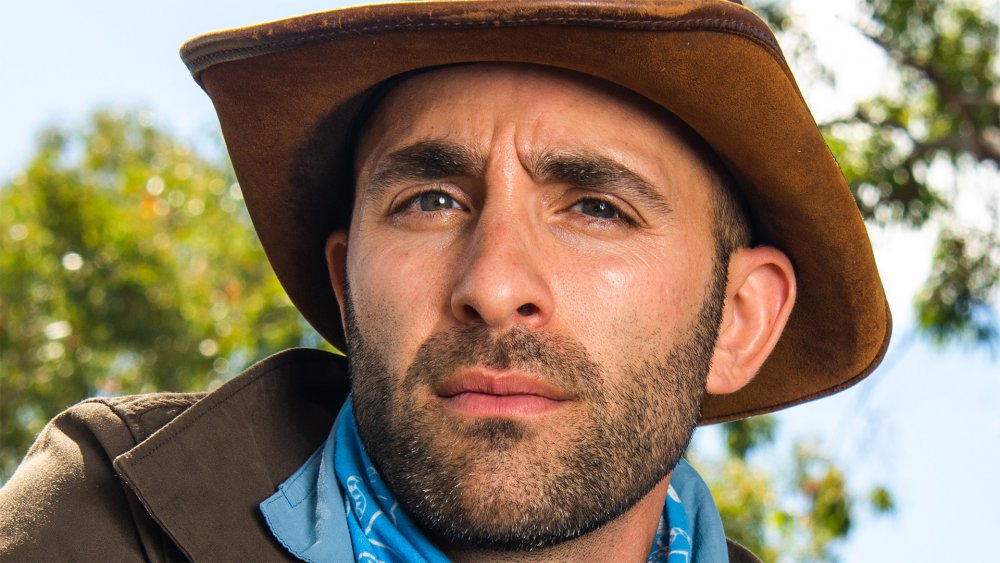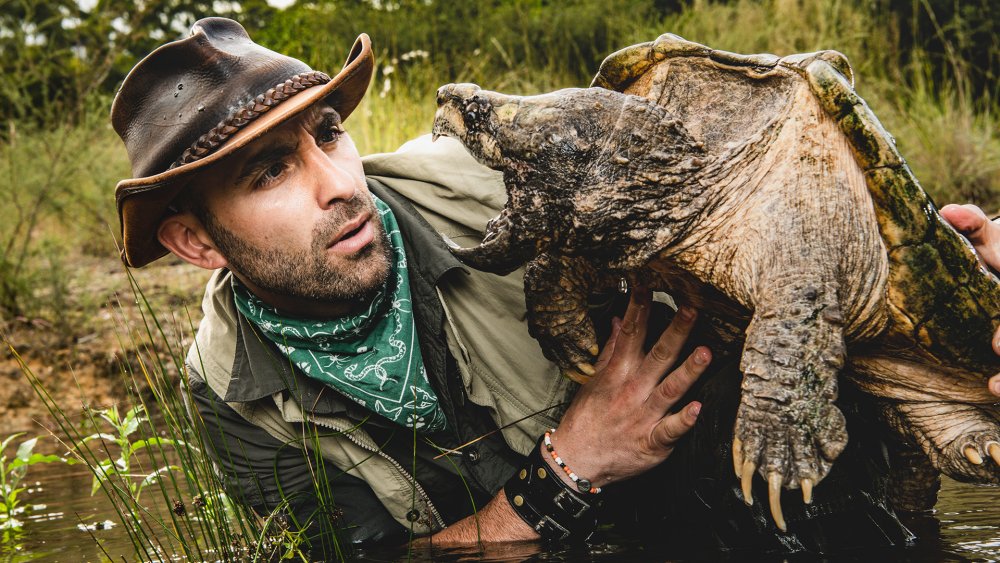Coyote Peterson's Scariest Animal Encounter - Exclusive
It would be easy to assume that Coyote Peterson is fearless. After all, the wildlife educator and popular YouTube star made his name by letting dangerous animals get up close and personal with him. On Peterson's Brave Wilderness YouTube channel, a video of the host getting stung by an executioner wasp, which Peterson says is the most painful thing he's ever felt, has over 28 million views. Another, in which the infamous bullet ant stings Peterson, has been viewed more than 45 million times.
It's not all stings and bites, either. Peterson's YouTube channel also features him going face to face with dangerous animals like alligators, pythons, and ocelots. On his new Animal Planet series, Coyote Peterson: Brave the Wild, Coyote gets in close quarters with alligator snapping turtles, Tasmanian devils, and the crocodile-like yacare caiman.
But Peterson does get scared occasionally, although not for the reasons you might expect. "It's not so much that I have scary bits that I have to embrace as much as it is sometimes finding myself in the wrong place at the wrong time," Peterson told Looper in a recent interview. "That becomes the scariest moment, when something happens that you didn't expect."
After all, Peterson films both Brave the Wild and his YouTube videos out in nature, where things rarely go according to plan. The weather is unpredictable. Locations can be remote and the terrain unfriendly to Coyote and his small crew. And then, of course, there are the creatures themselves, who don't care one whit that Peterson is a champion of conservation and animal rights. Working in tandem, these elements can create the perfect environment for a terrifying animal encounter, which Peterson told us all about.
It happened when Peterson was "on the side of a river in the middle of Alaska in the middle of nowhere," and came across "a mother grizzly bear and her three cubs." He explained to Looper that it wasn't planned — it just happened. With memories of Leonardo DiCaprio's The Revenant (in which his character is attacked by grizzly bears) fresh in Peterson's mind, he wasn't sure he was going to make it out the other side.
"The scenario you saw in that film, I was face to face with that at less than a hundred yards," Peterson said. "Fortunately, I was not attacked. Instead, the mother bear took her cubs and went in the opposite direction. But if she had decided to attack, I would've had absolutely nowhere to go."
A risk that's worth the reward
It goes without saying that Peterson and his crew do their best to make sure each shoot is as safe as possible. Peterson never subjects himself to potentially fatal bites or stings, has a medical team standing by during extra-dangerous bits, and does plenty of prep beforehand. "Before we go to a location, I do an extensive amount of research, not only about the environment but also the species that live there," Peterson explained to Looper. "You also have to be cognizant of poisonous plants and all kinds of things... before you actually enter an environment and go off trail."
Besides, the risk is worth it, Peterson said. Both Brave Wilderness and Brave the Wild are about teaching people about animals they might have overlooked. "We feel that part of our job is to tell the stories about the animals that you know very little about," he noted. "We'll look for something that we consider bizarre or obscure or misunderstood, something that people fear or that is surrounded in folklore and mystery... and try to make sure that we're telling the right story for that animal."
It seems to be working. Brave Wilderness holds the Guinness World records for Most Subscribed YouTube Channel Dedicated to Animals and Most Viewed YouTube Channel Dedicated to Animals. Brave the Wild, meanwhile, lets Peterson go more in-depth on certain topics.
With YouTube, Peterson said he "wasn't necessarily able to tell a larger narrative about certain species that [he] wanted to focus on." Brave the Wild's longer run-time — each episode runs between 30 minutes and an hour — opens the door to deeper dives. "We just really have the opportunity to tell bigger stories about animals that we had not featured before," Peterson explained.
Current Brave Wilderness fans will still find much of Brave the Wild familiar. Peterson is just as enthusiastic and animated on TV as he is on the web, and the show's overall mission remains the same. It's just longer, and has a bigger budget. "The style of cinematography, the drone shots, the music, the storytelling is all next level as compared to the Brave Wilderness channel," said Peterson.
And, of course, the mission remains the same. "We want the audience to say, 'These are really cool animals, now how can I do something to get involved and help better the life of a certain species?'" he shared. "Whether it's through YouTube or a TV show, it's important to share those stories and encourage the audience to get involved."
In other words, Brave the Wilder is fun with a message. "My team has just worked tirelessly this past year to bring this sort of animal edutainment in a way that brings us back to our roots," Peterson said. "Whether you're three years old or 93 years old, this show definitely has something awesome for you."
Coyote Peterson: Brave the Wild airs on Animal Planet on Sundays at 9 PM.

